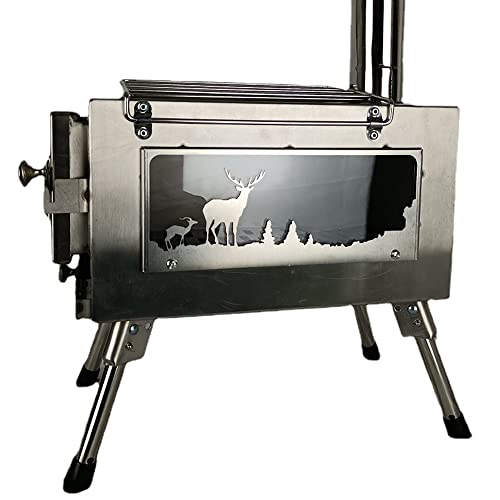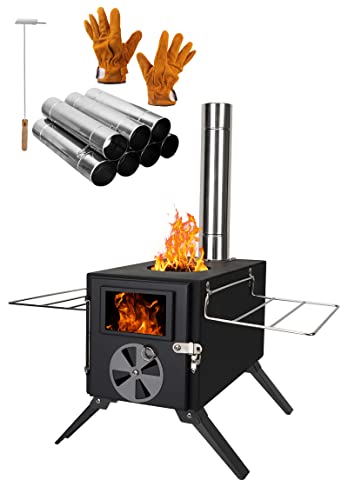An Adventure Back In Time: How People Talked About Wood Burning Stoves…
페이지 정보
작성자 Ian 작성일25-01-22 17:19 조회8회 댓글0건관련링크
본문
 Wood Burning Stoves Near Me
Wood Burning Stoves Near MeWood stoves are a stunning and efficient method to heat your house. However, there are several things to consider when purchasing a new stove. These include the EPA-certified energy efficiency, price and maintenance requirements.
Be careful not to become "number bound" and make your decision based solely on a certain rating or BTU output. You should also consider aesthetics, suggestions from an reputable retailer and feedback.
Cost
Wood stoves can add an elegant, stylish look to any house. They come in a wide variety of styles and colors to fit into any style. They are a great alternative to expensive heating systems. They are also energy efficient and cost-effective. However, there are a few things to take into consideration when purchasing a new wood stove. Included in this are the initial price as well as the installation costs and any extras, such as chimney liner.
The price of the stove is determined by the model and size you select. It is possible to find a freestanding wood stove priced under 700 dollars. The stove has large viewing windows, which is kept clean with a powerful airwash system. It is also multi-fuel that means it can burn a variety of fuels.
Noncatalytic wood stoves are more expensive than catalytic ones, however they are more difficult to ignite and require more fuel to produce the same amount of heat. They can release a higher amount of particulate matter than catalytic models. Despite these drawbacks the noncatalytic stove is an excellent choice for a lot of users.
Pellet stoves are another popular alternative to wood burning stoves. They operate in the same method, but they utilize smaller wood pellets or recycled materials to generate the heat and fire. They are less maintenance-intensive than wood stoves, but they don't offer the same amount of heat.
If you're looking to purchase pellet or wood stoves you'll have to take into account the cost of installing a venting system. Certain wood stoves require an intake of combustion air from outside and others require venting systems that connect with chimney. Based on the location you live in and the building codes of your area, you may have to get your stove approved by a local building inspector.
Installing a wood stove in an existing fireplace will cost less. You'll have to install a chimney liner and you may have hire a professional to maintain the chimney on a regular basis. Additionally the freestanding wood stove cannot reach all rooms in a house on multiple floors, which means you will need to install radiators in other areas to supplement the heat.
Energy Efficiency
As the cost of gas and electricity is rising many homeowners are searching for alternatives to heating their homes. Wood stoves are among the most sought-after alternatives to traditional heating systems due to the fact that they are a cost-effective and sustainable source of heat. They also burn cleaner, reducing the amount of air pollution.
Modern cheapest wood burning stove burning stoves have a high level of energy efficiency, meaning they can provide more heat for your home by using less fuel. This is due to the fact that modern Wood burning stoves (rvolchansk.ru) have smaller combustion chambers as compared to older models. They also have the catalytic combustion chamber, which burns fuel more efficiently. They also produce less harmful emissions, which can be important if you are living in an region where stricter standards for air quality are required.
Log burners are also more eco-friendly because they let you control the quantity of air supplied to your fire. This lets it burn at a lower temperature for a longer time. This can help reduce the amount of smoke generated by the fire and also stop the formation of flammable creosote in your chimney.
By burning a variety of types of wood, including scrap or reclaimed wood you can make a more balanced fuel mixture that will reduce the amount of gas waste produced by the burning. You can also collect unwanted timber that has been removed from construction projects and burn it on your stove. By doing this you will save on the cost of purchasing firewood and help preserve our woodlands.
portable wood heater is a carbon-neutral fuel due to its renewable resource. The trees absorb carbon dioxide as they grow and release it upon burning, creating an endless cycle of life. By using local wood sources, you can also contribute to the local economy while reducing the environmental impact of your business.
A fireplace with wood burning can be used as a backup source of heat in the event that there is a power loss. If you are able to keep enough logs in storage and wood, you'll be able to keep your home warm for a number of days. You can make use of your stove to cook and heat water.
Environmental Impact
The use of a wood stove could result in negative effects on the environment and your health, based on how well it's executed and the type of wood you are using. The burning of wood releases harmful gases such as nitrogen oxides and carbon monoxide and fine particles referred to as PM (particulate material). The PM in the smoke is composed of a range of dangerous substances, including black carbon, tar, and soot. These contaminants are known to cause a number of health issues like heart disease and asthma.
The emissions produced by wood-burning stoves contribute to global warming, which negatively affects the environment and the health of people. In addition burning wood can result in the release of volatile organic compounds (VOCs), which are the main source of VOCs in the indoor air. VOCs, which are a form of pollutant have been associated with a variety of health problems including headaches and irritation to the eyes.
VOCs are formed by incomplete combustion of wood. They can cause damage to the respiratory tract, lungs, and circulatory system. They also contribute to a variety of other environmental issues that include the loss of biodiversity as well as water quality issues and soil erosion. In certain areas, the concentrations of VOCs found in wood burner near me smoke could exceed federally enforced standards.
According to a report by Undark, five states have offered incentives to replace old wood-burning stoves by EPA-certified models. However, a lot of these appliances are marginally better than the older models. Moreover, they are expensive and require electricity to run fans, controls, and pellet feeders.
Consequently, some environmental agencies have begun to abandon incentives to encourage the purchase of new wood stoves in favour of encouraging people to switch over to other sources of heat. The State of Oregon for example requires homeowners to remove non-certified wood burning appliances and to help them switch to heat pumps.
Wood stoves are more efficient in energy use than other heating methods like electric or gas furnaces. They generate more heat from less wood than their electric or gas counterparts, making them a cost-effective and sustainable alternative for heating your home. However, they must be regularly inspected and maintained to reduce the amount of fuel required and increase efficiency. For instance, taking out unused feed systems and hoppers at the end of the season will reduce corrosion and ensure that the stove is ready to go again in the autumn. Regular cleaning of the stove's chimney vent can also stop the buildup of flammable materials.
Safety
Wood burning stoves offer a warm and cozy option for heating however they also pose fire hazards that can threaten your family's health. Fires can lead to smoke inhalation and carbon monoxide poisoning. However, you can ensure the safety of your home and family members by taking the proper safety precautions.
Ensure your stove is properly installed and vented. A qualified professional should install your chimney, flue pipe and the connectors. The chimney should be at least three feet above any objects that could ignite. This includes overhanging trees or buildings adjacent to them. Install carbon monoxide and smoke (CO) detectors in every bedroom and on every level of the house, and interconnect them so they all sound when one alarm goes off. Make sure to check your alarms frequently and replace batteries. Keep combustibles like paper, garbage plastics, plastics and so on, away from your stove and don't burn them there or near it.
Do not leave a wood-burning stove unattended, especially overnight. If you are using a wood-burning appliance in the bedroom switch off the heat and open the windows before going to go to bed. This will stop smoke from the wood stove from entering the room and creating CO poisoning.
Install an air-cleaning device when you are planning to use wood stove. These systems neutralize and remove volatile organic compounds in the exhaust stream before it leaves the fireplace. You should also keep your stove clean and keep the grate and draft louvers free of debris and ash.
Wood smoke is harmful to everyone but is especially harmful to older adults and children who suffer from weak lung capacity. It can also trigger asthma and respiratory infections. Avoid using a wood stove on days when levels of pollution are high. The EPA and each state provide daily reports on air quality.
Certain new wood stoves are more efficient than the old models, but they release large quantities of pollution into the atmosphere. Choose a model that has been approved by the EPA as being more than 72 percent efficient, to reduce the amount of pollution you are exposed to. Burn only dry, seasoned wood. This kind of wood has less toxins and more heat than fresh, green wood.

Warning: Use of undefined constant php - assumed 'php' (this will throw an Error in a future version of PHP) in /data/www/kacu.hbni.co.kr/dev/skin/board/basic/view.skin.php on line 152
댓글목록
등록된 댓글이 없습니다.

